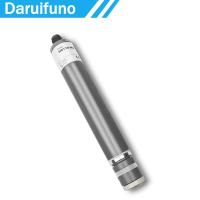Suzhou Delfino Environmental Technology Co., Ltd. is a professional
manufacturer of water analysis instruments and sensors, integrating
development and production together. Our main products include
online, portable water quality analysis instruments. Since its
establishment, we have focused on the development and production of
water quality analysis instruments.
The monitoring parameters of water quality analyzer instruments
mainly include: pH, ORP, dissolved oxygen,
conductivity/TDS/salinity, turbidity, SS, Chlorophyll, Blue-green
algae, COD, NH4-N, NO3, free chlorine, peracetic acid and so on.
As the rapid growth of the global economy leads to increased
consumption and urbanization, solid waste generation has increased
significantly, directly affecting the water and wastewater
treatment industry. Daruifuno aims to provide solutions to various
industries and fields and create a cleaner and healthier drinking
water environment for the earth.
Our products mianly application for follows industry:Municipal
sewage water treatment plant, industrial wastewater treatment
plant, Chemical, Petroleum, Papermaking, Food and drinking,
Medicine, Electroplating, PCB plant, fish
farm,Lake/river/ocean/groundwater/surface and so on.
Our company was established in 2015, but our predecessor has been
committed to the water quality testing industry for more than 10
years. At present, we have our own R&D center with many senior
engineers with more than 10 years of experience in the research and
development of water quality analyzers and water quality sensors,
and are equipped with strict front-line production workers,
professional quality inspection personnel and testing equipment to
check every process.
As a high-tech enterprise in China, our production is strictly in
accordance with ISO9001 from raw material sources to finished
equipment. After years of efforts, the company has obtained more
than 20 patent certificates, high-tech enterprise certificates, CE,
SGS, etc. He has accumulated rich practical experience in the field
of water quality testing and has unique insights in the field of
water quality testing.
Our company takes "reasonable prices, efficient production time,
and good after-sales service" as its purpose and adheres to the
business philosophy of "based on quality and creating value for
customers". At present, the company is actively exploring the
international market and actively promoting its own brands and
products. It has been exported to Asia, Southeast Asia, Europe,
Africa, and South America, with customers in more than 50 countries
and regions around the world. And hope to develop together with
customers for mutual benefit with high-quality products and sincere
services.












